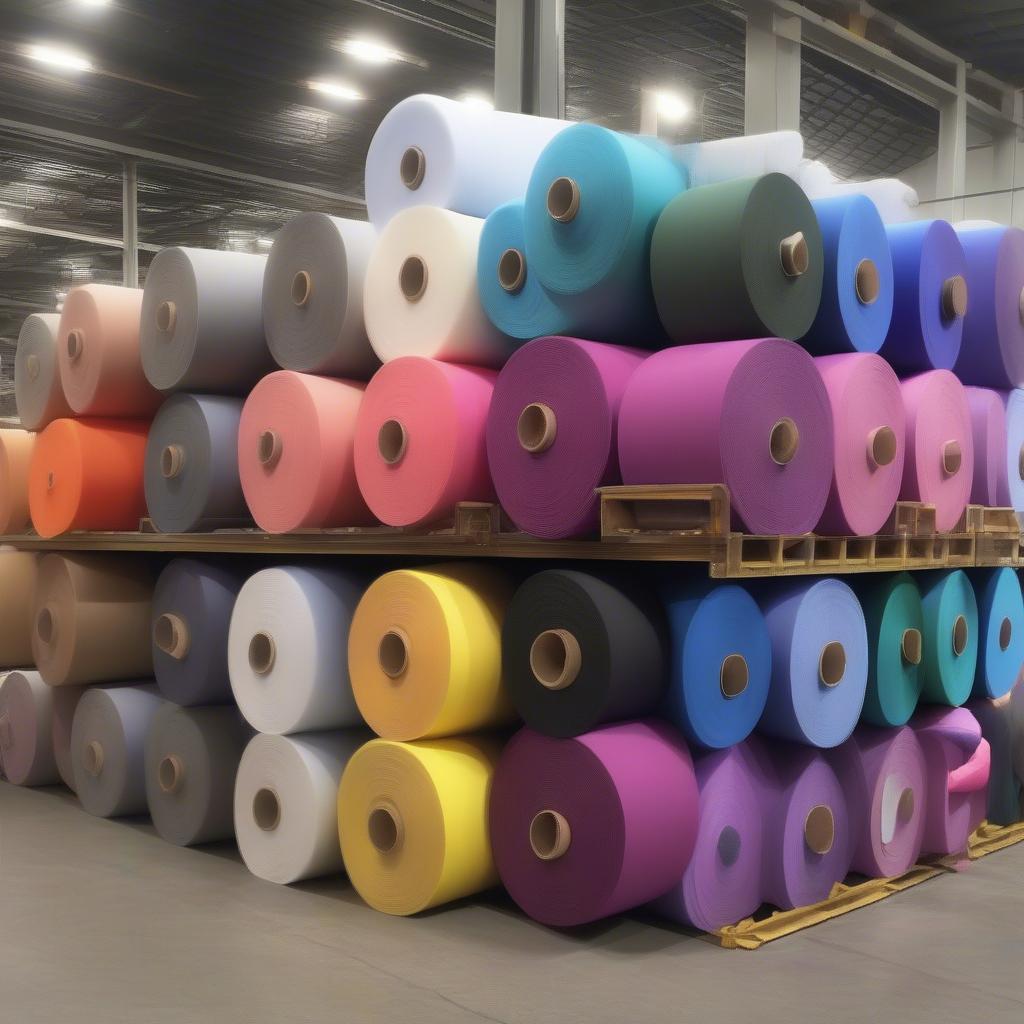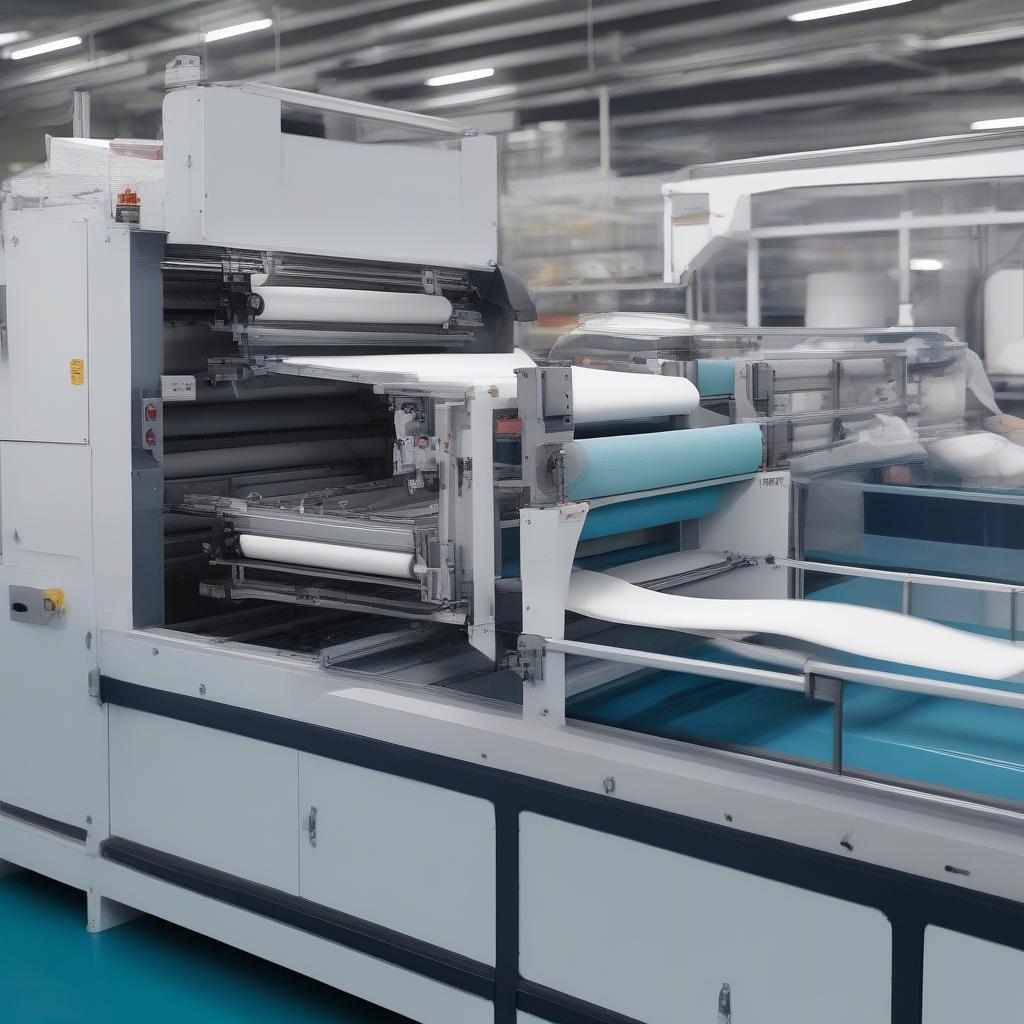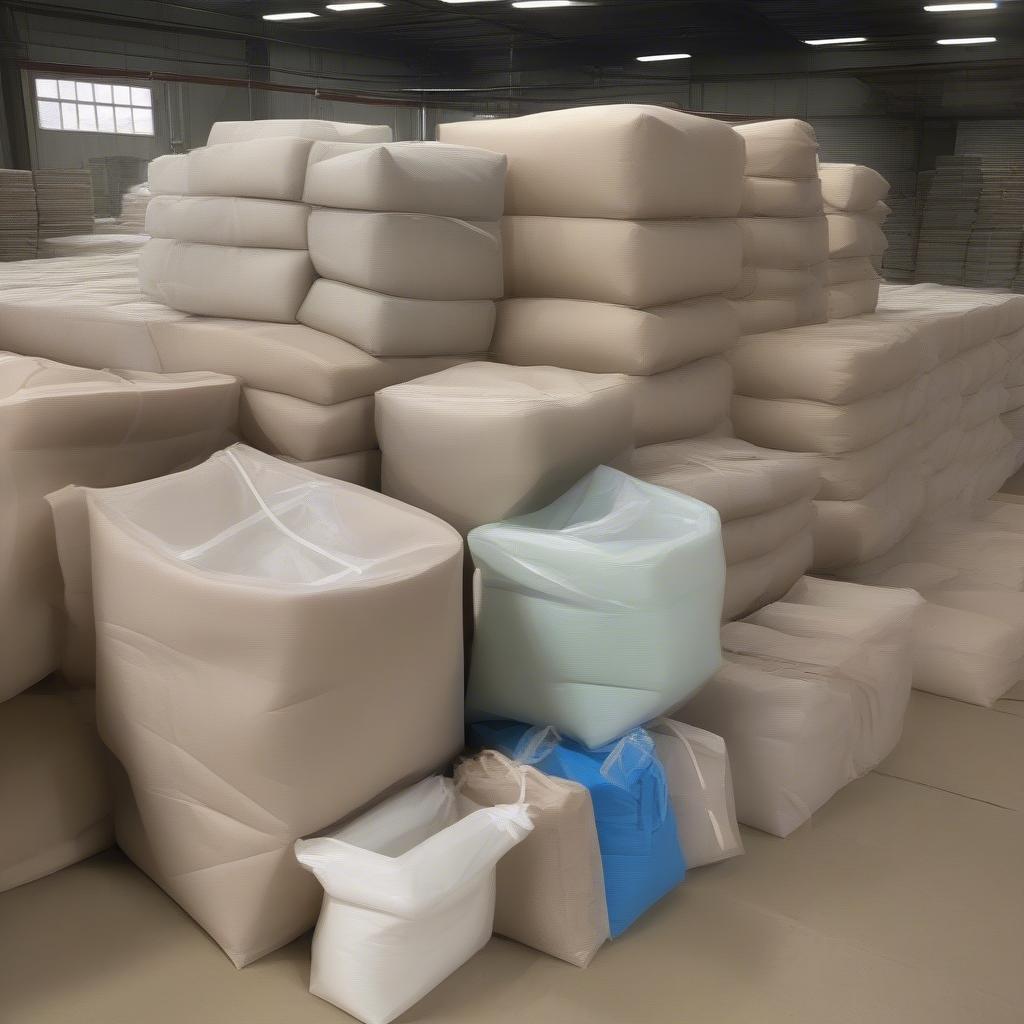Woven Bag
Manufacturing of Non Woven Bags: A Comprehensive Guide
The Manufacturing Of Non Woven Bags has revolutionized the packaging industry, offering a sustainable and cost-effective alternative to traditional materials. This guide delves into the intricacies of non woven bag production, from raw materials to finished products. We’ll explore the various methods, machinery, and considerations involved in creating these versatile bags. non woven bags manufacturing machine factory
Understanding Non Woven Fabrics
Non woven fabrics are engineered materials created by bonding fibers together through mechanical, thermal, or chemical processes. Unlike woven fabrics, they don’t involve interlacing yarns. This structure gives non woven fabrics unique properties like high strength, breathability, and liquid repellency, making them ideal for a wide range of applications, including bag manufacturing.
Raw Materials Used in Non Woven Bag Production
Polypropylene (PP) is the most common material used in non woven bag manufacturing due to its durability, recyclability, and low cost. Other materials include polyethylene (PE), polyester, and biodegradable options like PLA (polylactic acid). The choice of material depends on the intended use of the bag, desired strength, and environmental considerations.
 Rolls of Non-Woven Fabric in Various Colors
Rolls of Non-Woven Fabric in Various Colors
The Manufacturing Process of Non Woven Bags
The manufacturing of non woven bags typically involves several key stages:
- Web Formation: Fibers are arranged into a web using various methods like spunbond, meltblown, or staple fiber.
- Web Bonding: The fiber web is then bonded together using techniques like thermal bonding, chemical bonding, or needle punching. Thermal bonding uses heat and pressure to fuse the fibers, while chemical bonding uses adhesives. Needle punching involves mechanically interlocking the fibers.
- Bag Cutting and Sealing: The bonded web is cut into the desired bag shape and size. The edges are then sealed using heat or ultrasonic welding to create a strong and durable seam.
- Printing and Finishing: Bags can be customized with logos, designs, and other branding elements through printing methods like screen printing or flexography. Additional finishing touches like gussets, handles, and zippers can be added to enhance functionality and aesthetics.
non woven bags manufacturing business plan pdf
Types of Non Woven Bag Making Machines
Several types of machines are used in the manufacturing of non woven bags, including:
- Automatic Non Woven Bag Making Machine: These machines automate the entire process from web feeding to bag finishing, offering high production speeds and efficiency.
- Semi-Automatic Non Woven Bag Making Machine: These machines require some manual intervention, offering a balance between automation and flexibility.
- Ultrasonic Sealing Machine: Used to create strong and seamless seals on the bag edges.
- Printing Machines: Used for customizing bags with logos and designs.
 Automated Non-Woven Bag Making Machine in Operation
Automated Non-Woven Bag Making Machine in Operation
Advantages of Non Woven Bags
Non woven bags offer numerous advantages:
- Eco-Friendly: Many non woven bags are made from recyclable materials, contributing to a more sustainable packaging solution. Biodegradable options are also available.
- Durable and Strong: Non woven fabrics offer excellent strength and tear resistance, making them suitable for carrying a variety of items.
- Cost-Effective: Non woven bags are relatively inexpensive to produce, especially in large quantities.
- Customizable: They can be easily printed with logos and designs, offering excellent branding opportunities.
- Versatile: Available in a wide range of sizes, colors, and styles, making them suitable for diverse applications.
non woven carry bags manufacturing process
Choosing the Right Non Woven Bag Manufacturing Process
Selecting the appropriate manufacturing process depends on several factors, including:
- Production Volume: High-volume production typically requires automated machinery.
- Bag Design and Features: Complex designs may necessitate specialized equipment.
- Budget: The cost of machinery and materials can influence the choice of process.
- Environmental Considerations: The use of recycled or biodegradable materials can impact the manufacturing process.
pp non woven bags manufacturing process
“The key to success in non woven bag manufacturing lies in understanding the specific needs of your target market and choosing the right materials and processes to meet those needs,” says industry expert, Sarah Miller, Sustainable Packaging Consultant at EcoPack Solutions.
 Stacks of Finished Non-Woven Bags Ready for Shipment
Stacks of Finished Non-Woven Bags Ready for Shipment
Conclusion
The manufacturing of non woven bags is a complex but efficient process offering a sustainable and versatile packaging solution. By understanding the different stages of production, materials, and machinery involved, businesses can make informed decisions to optimize their non woven bag manufacturing operations. non woven carry bags manufacturing machine price
“Innovations in non woven fabric technology continue to drive improvements in bag performance and sustainability,” adds Dr. Michael Chen, Materials Science Engineer at Textile Innovations Lab. “We can expect to see even more eco-friendly and high-performance non woven bags in the future.”
Need assistance with your non woven bag manufacturing needs? Contact us at Hanoi, Vietnam or Tech Avenue, Suite 12, San Francisco, CA 94105, USA. We have a 24/7 customer support team.
